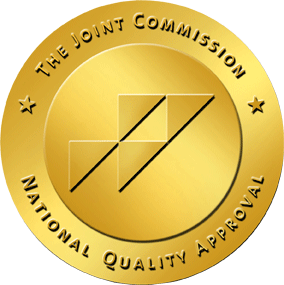Borderline personality disorder treatment can be a lot to take in, especially if you’re just starting to learn about it. If you or someone you care about might have BPD, it’s important to understand what it is and how it affects daily life.
This blog post covers what Borderline Personality Disorder (BPD) means, how it shows up in everyday situations, how to get a proper diagnosis, and what treatment options are available to help you feel better and take control of your life.

What Is Borderline Personality Disorder (BPD)?
BPD is a mental health condition that affects the way you think, feel, and behave. It can make it hard for you to manage your emotions and relationships.
People with BPD may have strong mood swings, feel empty inside, and have difficulty controlling their feelings and reactions. These changes can happen quickly and feel overwhelming.
Causes of BPD
The exact cause of BPD is not fully understood, but it’s believed to be a mix of factors:
- Genetics: BPD can run in families, which suggests that your genes might play a role.
- Environment: If you’ve had stressful or traumatic experiences, especially in childhood, such as abuse or neglect, it can increase the risk of developing BPD.
- Brain Function: Some research suggests that differences in brain chemicals and areas of the brain that control emotions may contribute to BPD.
Symptoms of BPD
Borderline Personality Disorder is usually identified by certain signs and symptoms, and should be considered for treatment options. Common symptoms include:
- Extreme mood swings: You may feel very happy one minute and suddenly very sad or angry the next, sometimes for no clear reason.
- Fear of abandonment: You might have intense worries that people close to you will leave or abandon you, even if there’s no reason to believe this.
- Unstable relationships: You could have difficulty maintaining relationships because of intense, shifting feelings toward others, sometimes feeling like you love someone deeply, and other times feeling like you can’t stand them.
- Impulsive behaviors: You may act impulsively in ways that can be harmful, like spending too much money, driving recklessly, or engaging in risky behaviors.
- Chronic feelings of emptiness: You might feel empty or like something is missing inside, which can make it hard to find joy or purpose in life.
- Intense anger: You could struggle with controlling your anger, and sometimes you may feel like your emotions are out of control.
- Self-harm or suicidal behavior: Some people with BPD may hurt themselves or have thoughts of suicide as a way to cope with emotional pain.
If you experience some of these symptoms, it’s important to seek help. With the right treatment, you can learn to manage the symptoms and live a fulfilling life.
How to Seek a Diagnosis for BPD
Seeking a diagnosis is an important first step toward understanding your condition and getting the right help.
Here’s how the process typically works:
1. Speak with a Doctor or Mental Health Professional
The first thing you’ll need to do is talk to a doctor or a mental health professional, like a psychologist or psychiatrist. They’ll conduct a detailed interview with you to learn about your symptoms, behaviors, and feelings. This helps them understand your situation more clearly. They may ask about things like your emotional experiences, relationships, and any difficulties you face in daily life.
2. Mental Health Evaluation
Next, you’ll likely go through a mental health evaluation. This may involve answering a series of questions or completing assessments that explore your thoughts, emotions, and behavior patterns. These evaluations help the professional see if your symptoms fit the criteria for BPD or if they might be linked to another issue.
3. Medical History and Exam
The professional may also want to know about your medical history to rule out any physical causes for your symptoms. This could include asking about past health problems, medications you’ve taken, or family history of mental health issues.
4. Discussion of Symptoms
A big part of the diagnosis is discussing your symptoms. The doctor will ask you specific questions about how you feel day-to-day. They might ask about your moods, your relationships, impulsive behaviors, feelings of emptiness, and fears of abandonment. This helps them understand how these symptoms are affecting your life.
When is BPD Diagnosed?
BPD is usually diagnosed in adults, as symptoms in children or teenagers may change as they grow older. What might look like BPD in younger people can sometimes disappear as they mature, making a diagnosis less reliable in those cases.
Understanding the DSM and Other Models
To help doctors make accurate diagnoses, they rely on tools like the Diagnostic and Statistical Manual of Mental Disorders (DSM) as posted by the American Psychological Association. Over the past 25 years, the DSM has become more detailed in its criteria for diagnosing personality disorders, including BPD.
- Cluster B: BPD is part of Cluster B, which includes personality disorders with dramatic or emotional behaviors, like narcissistic personality disorder or antisocial personality disorder.
- DSM-5: The latest version of the DSM, the DSM-5, introduced a new way of thinking about personality disorders. This model helps doctors recognize that people may have traits from different personality disorders, rather than fitting neatly into just one category.
The DSM-5 requires that you meet two main criteria to be diagnosed with BPD:
- You must have significant problems in at least two areas of personality functioning, like identity, self-direction, empathy, or intimacy.
- You must show at least four of the following traits: emotional instability, impulsiveness, risky behavior, anxiety, persistent sadness, fear of separation, or hostility. At least one of these must be impulsiveness, risky behavior, or hostility.
Another tool used for diagnosing BPD is the International Classification of Diseases (ICD-11). This model is also dimensional, meaning it looks at the severity of the traits you show. The ICD-11 includes a “borderline pattern” to help clinicians diagnose BPD more accurately, but it also looks at a person’s overall traits and severity, rather than just fitting them into a specific box.
Treatment Options for BPD
The American Psychiatric Association has set out guidelines to help mental health professionals provide effective treatment. An overview of the treatment options for BPD includes the following:
1. Initial Assessment and Treatment Plan
When you first seek treatment, the APA recommends a detailed assessment to understand your symptoms, needs, and goals. The professional will ask about your reasons for seeking help, your psychiatric history, any other health conditions you may have, and any risk factors, such as thoughts of self-harm or suicide.
From there, your treatment plan should be person-centered, meaning it’s created specifically with you in mind and takes into account your preferences and goals. This plan will guide your treatment and should be reviewed regularly to see how things are going.
2. Psychotherapy (Talk Therapy)
Psychotherapy is one of the most important treatments for BPD. The APA recommends that you engage in a structured approach to therapy that’s supported by research and focuses on the key features of BPD. The goal is to help you manage emotions, build better relationships, and change behaviors that are causing you distress.
One of the most commonly used forms of therapy for BPD is Dialectical Behavior Therapy (DBT). DBT teaches you skills to handle intense emotions, reduce impulsive behaviors, and improve relationships. It’s highly effective for many people with BPD.
3. Medication
While there’s no specific medication for BPD, certain medications can help with symptoms like depression, anxiety, or mood swings. The APA suggests that medications should be used as a temporary measure and only when necessary. They should target a specific symptom, such as helping you manage feelings of anxiety or impulsivity, but they should be used alongside therapy, not as a substitute.
The APA also recommends reviewing your medications every six months to check if they’re working well and to see if any adjustments are needed.
4. Co-occurring Disorders
It’s common for individuals with borderline personality disorder to experience other mental health challenges, such as depression, anxiety, or substance use disorders. According to the American Psychiatric Association (APA), these co-occurring conditions should be addressed alongside primary borderline personality disorder treatment to ensure long-term success.
To develop the most effective approach, a mental health professional will take a comprehensive look at your history—evaluating previous therapies, medications, and other treatments you’ve tried.
5. Ongoing Monitoring
Once you start treatment, it’s important to have regular check-ins to see how you’re doing. This includes talking about your progress in therapy, reviewing medications, and making any necessary changes to your treatment plan.
Treatment for BPD typically involves a combination of psychotherapy, possibly medication, and regular monitoring. The APA emphasizes a person-centered approach that focuses on your needs, preferences, and goals.
Deciding Between Inpatient and Outpatient Treatment
When you’re looking for help with BPD, one of the big choices you’ll face is whether to go with inpatient or outpatient care. The right treatment option depends on your needs, your safety, and how much support you have at home.
Inpatient Treatment
Inpatient care means you stay at a hospital or treatment center full-time. You’ll get 24/7 care from doctors, nurses, and therapists. This is a good option if:
- You feel unsafe or have thoughts of hurting yourself
- Your symptoms are very strong and hard to manage
- You need a break from daily life to focus fully on healing
Inpatient care gives you structure, daily therapy, and constant support. It can help you stabilize during a tough time.
Outpatient Treatment
Outpatient treatment means you live at home but visit a clinic or therapist regularly. This might be best if:
- Your symptoms are more manageable
- You have a safe and stable home environment
- You want to keep going to school or work while getting help
Outpatient care can include weekly therapy, group sessions, and sometimes medication management. It gives you the freedom to stay connected with your everyday life while still working on your mental health.
Deciding between the two comes down to how much help you need right now. If your safety is at risk, inpatient care might be the better choice. If you’re doing okay but need support, outpatient care can be a strong option. Sometimes, people start with inpatient care and then move to outpatient care as they start to feel better.
No matter which path you take, both options can be part of a strong borderline personality disorder treatment plan.
OceanRock Health is here to help you make the right choice and support you every step of the way with care that fits your needs.










